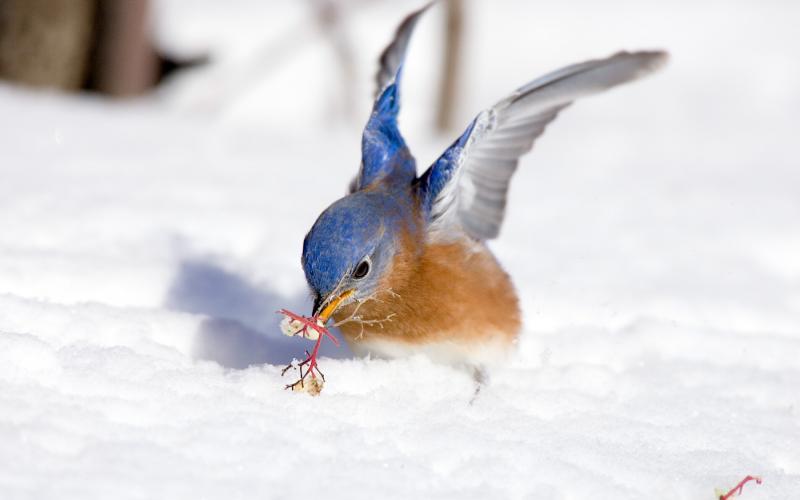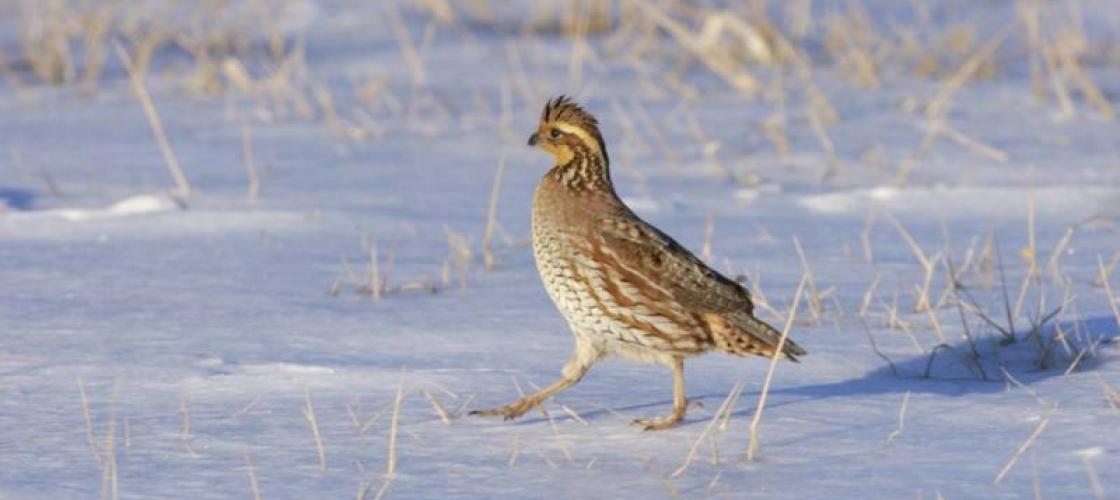Light snow dusts the landscape like sprinklings of powdered sugar. A few inches of snow hold the delightful promise of a snowman. Heavy snowfalls weigh down branches and wires, and blunt the familiar outlines of objects in the neighborhood and countryside. People generally enjoy snow, but how does wildlife fare when the snow falls?
The amount of snow fall determines how wildlife survive and thrive in the winter. One inch of snow hinders ground-feeding birds such as quail from finding food, but efficiently hides a meadow mouse from the watchful eye of a hungry hawk.
A few inches of snow shields small animals from blustery cold winds and insulates the land, protecting insects and plants.
A half foot of snow forces a fox to leap and bound, yet lifts a rabbit, bringing it closer to its food supply of winter buds on saplings.
Ruffed grouse take advantage of deep powdery snows by diving into drifts at night and reaping the benefits of an insulated snow blanket, while a hungry deer fights deep snow drifts with each and every step.
Playful otters enjoy a good snow by sliding down snowy banks on their bellies, but wildlife such as songbirds struggle in the snow and cold of winter. Snow affects wildlife in different ways.
Surviving Winter
In addition to surviving threats from other wildlife, in winter, animals are tasked with surviving the cold winter temps. Discover Magazine highlights a few ways they do so:
- Warm-blooded animals need to maintain their internal body temperature in cold conditions.
- Cold tolerance in hibernators is partially supported by somatosensory system
- Many cold-climate, warm-blooded animals exhibit torpor — a state of decreased activity. They look like they are sleeping. Because animals capable of torpor alternate between internally regulating their body temperature and allowing the environment to influence it, scientists consider them “heterotherms.”
- During harsh conditions, this flexibility offers the advantage of a lower body temperature – remarkably in some species, even below the 32 degrees Fahrenheit freezing point – that is not compatible with many physiologic functions. The result is a lower metabolic rate, and thus lower energy and food demand. Hibernation is a prolonged version of torpor.
- Fish survive freezing water because they have unique enzymes that allow physiologic functions to continue at colder temperatures.
For more on how animals survive the winter months, visit Discover Magazine.




Recent Posts
























